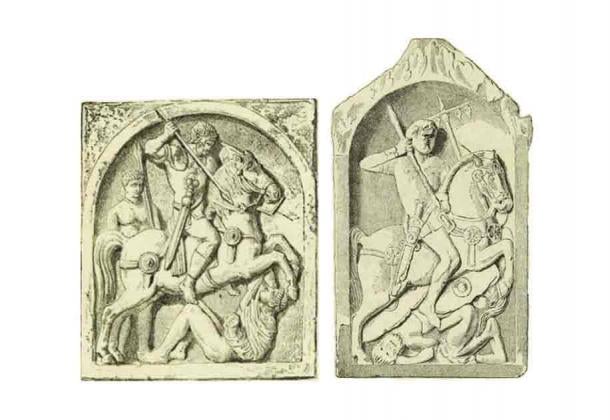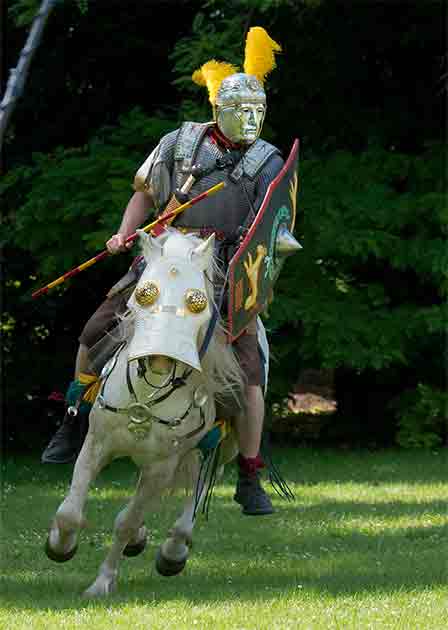🔴 Website 👉 https://u-s-news.com/
Telegram 👉 https://t.me/usnewscom_channel
In ancient times, no army was truly powerful without a cavalry . The equivalent of modern tanks and special forces, cavalrymen were the terror of the ancient battlefields. A force to be reckoned with, they had the power to shift the course of battle, while the sight of their charging horses frequently prompted brave soldiers to retreat in fear. Arguably, the most powerful and organized cavalry in ancient times was that of the Romans. Playing key military roles throughout the regal, republican, and imperial eras, the Roman cavalry was in many ways responsible for the continued successes and military expansion of Rome.
The Roman Cavalry at the Forefront of Military Expansion
The ancient Roman cavalry stands as a direct proof of the military prowess and strategic abilities of one of the most formidable empires in history. Throughout the rise and fall of the Roman Republic and later Roman Empire, cavalry played a crucial role in shaping the outcomes of battles and campaigns, both in civil wars and in conquests. From its early reliance on allied cavalry to the development of its own elite units, the Roman cavalry evolved significantly, adapting to the changing demands of warfare across centuries.
“Cavalry, by combining speed, mobility, and independence, played an important role in Roman military strategy and tactics. During a campaign, cavalry was used for reconnaissance, for gathering information on the enemy’s forces and movements, for protecting foraging troops, and for securing the army on the march. Conversely, the Roman cavalry was used to harass the enemy on the march and to disrupt its supplies and foraging” (Paul Erdkamp, 2011).
In the early days of Rome, during the Roman Kingdom, the cavalry was called celeres, and numbered just 300 men from the wealthiest ranks of society. Their role was to guard the king at all times. Later, their number increased and their role gradually expanded.
During the Roman Republic, the cavalry primarily consisted of wealthy Roman citizens who could afford their own horses and equipment. These cavalrymen, known as equites, quickly formed the backbone of Rome’s mounted forces alongside allied cavalry from neighboring regions. However, as Rome expanded, so did its need for a more structured cavalry force. By the time of the Marian reforms in the late 2nd century BC, the Roman army underwent significant restructuring, including the professionalization of their cavalry.
Roman cavalry battle as depicted on the north face of the Mausoleum of Glanum in southern France. (Cancre / CC BY-SA 4.0)
The Roman Cavalry was a Modern Fighting Force in an Ancient Era
Under the Marian reforms, the Roman cavalry was organized into specialized units known as alae, each consisting of several squadrons called turmae. These units were typically stationed on the flanks of the legions and played a crucial role in pursuing routed enemies. Additionally, the Romans sometimes incorporated cavalry auxiliaries recruited from conquered territories, such as Gaul or Numidia, further diversifying their mounted forces.
The Roman cavalry employed a variety of tactics depending on the circumstances of the battle. One of their primary roles was reconnaissance, gathering intelligence about enemy movements and terrain. Mounted scouts would survey the battlefield, identify enemy positions and report back to the commanding officers, providing vital information for strategic planning. All this was possible thanks to their speed.
In open-field battles, however, the cavalry often operated on the flanks, protecting the infantry formations from encirclement and launching devastating charges against vulnerable enemy units. The Roman cavalry was known for its disciplined formations and coordinated maneuvers, which allowed them to maintain cohesion even amidst the chaos of battle. And it was exactly this role in a battle that allowed them to quickly turn the events into Roman favor.
During sieges, the cavalry’s role shifted to patrolling the surrounding areas, intercepting enemy reinforcements and protecting supply lines. Their mobility and versatility made them indispensable assets in both offensive and defensive operations.
Tombstones of Roman cavalrymen buried in modern-day Germany. (Public domain)
Mighty Mounted Warriors: Weapons and Armor of the Legendary Roman Cavalry
Roman cavalrymen were equipped with a variety of weapons and armor suited for both melee combat and skirmishing. The primary weapon was the spatha, a long sword used for slashing and thrusting. They also carried javelins ( pila) for throwing at enemy formations before engaging in melee combat. Additionally, some cavalry units were equipped with lances ( contus), particularly those specialized in shock cavalry tactics.
In terms of armor, Roman cavalrymen wore helmets, such as the galea, to protect their heads, and either mail or scale armor to safeguard their bodies. Shields ( scuta) were less commonly used by cavalry than by infantry due to the need for mobility, but some cavalrymen carried smaller, round shields ( parma) for added protection.
Training for the Roman cavalry was also rigorous and comprehensive. Recruits underwent intensive exercises in horsemanship, weapon handling and formation tactics. Drill sergeants ( cornicularii) supervised their training, ensuring that each cavalryman attained a high level of proficiency in both individual and collective skills.
Roman cavalry reenactment in full costume. (MatthiasKabel / CC BY-SA 3.0)
Rome’s Most Potent Weapon: The Power of the Roman Cavalry
The ancient Roman cavalry left an undeniable stamp on military history, contributing to the success of numerous conquests and campaigns throughout the Republic and Empire. Their versatility, discipline and adaptability made them a formidable force on the battlefield, capable of engaging in a wide range of operations.
What is more, the Roman cavalry’s organizational structure and tactics served as models for future generations of military strategists. Even as the Roman Empire declined and fell, elements of Roman cavalry tactics and organization persisted in the military practices of successor states and neighboring civilizations.
In many ways, the ancient Roman cavalry exemplifies the military sophistication and strategic innovation of one of the most influential empires in history. From its humble origins as a collection of citizen horsemen to its evolution into a professionalized fighting force, the Roman cavalry played a pivotal role in shaping the course of ancient Mediterranean warfare.
Top image: Representative image of the Roman cavalry. Source: furyon / Adobe Stock
References
Erdkamp, P. 2011. A Companion to the Roman Army. John Wiley & Sons.
McCall, J. 2001. The Cavalry of the Roman Republic. Routledge.
Sidnell, P. 2006. Warhorse: Cavalry in Ancient Warfare. Continuum.



